I received some fantastic suggestions last week, both in the comments and in my inbox, about how to improve a refined Korean hornbeam. I’ll respond below, but first, here’s the tree as it looked last week for reference.
Korean hornbeam
A number of you suggested thinning the branches – I agree. I didn’t thin the tree last year and as a result, the ramification has become congested and a number of small branches died. Some basic cutback will improve the look of the tree in winter and make it easier to maintain the desired silhouette.
Another common comment was about developing a more rounded apex. I agree with this suggestion too. Very round apices are common to most deciduous varieties and look good on hornbeam. The big question is whether to accomplish this by reducing the current apex or encouraging lower branches to lengthen. My guess is that it will be some of each for this tree.
Zach asked about the separation between branch pads. While I love deciduous trees that are so dense not even a finger can fit between shoots, I think they look best when there are breaks here and there that offer a view into the tree’s interior. When cutting back, I’ll keep an eye towards areas where I might create some gaps between branches.
Eric’s comment about the taper along the trunk is right on. When I began work on the tree, I removed the top third of the trunk and developed a new apex from a small shoot. The taper remains inconsistent in the new section and would look better were it more gradual from the roots to apex. I think a sacrifice branch could help here and will look out for a candidate in the back of the tree so the scar won’t be visible from the front. Am not sure, however, when I’ll be ready to shift back into development mode for a few years.
The overly large and awkward lower branches on the right didn’t escape Frank or Bruce’s attention. I let the branch thicken too much when it was initially developed and have avoided starting from scratch again. I’m hoping that by developing better secondary branching that the thickness won’t be as much of an issue, though this approach is more of an accommodation than a fix.
(For more on the tree’s development, including the creation of the lowest branches, see the 10-year progression.)
Mac astutely points out that the initial angle of the second branch on the left is less than graceful when viewed from the front. This is a result of the initial wiring after I’d cut the branch back to a stub over 10 years ago. Removing it isn’t a good option, however, as that would leave a large gap in the back of the tree. It might be more of an option as nearby branches continue to fill in.
Lani’s comment about the branches having a different look on the left and right sides of the tree gets to the heart of what I’d like to improve going forward. Trimming, and further developing the branches until they have better balance is the fix here.
I like Stan and Charlie’s idea of radically shortening the trunk where it jogs to the right. If I had two of these trees, I’d shorten one to see how I like the more compact look.
Thinning the branches
For the time being, I avoided removing major branches and instead spent a couple hours making many small cuts. The cuts themselves fit into just a few categories. I shortened long shoots that lacked side branches or extended beyond the desired silhouette, thinned congested areas, and removed dead twigs.
Here’s the first branch on the left before and after thinning.
Before thinning
After thinning
And here’s the first branch on the right after thinning. Note the awkward branch structure – more refinement is in order.
First branch on the right
When looking closely at the trunk, it’s easy to see how different the top and bottom sections are. Here’s a close-up of the lower part of the trunk – the part that was originally collected in Korea.
Trunk detail
And here’s the top of the trunk – the part that developed over the past 10 years.
Close-up of the apex
For some perspective on overall density, here’s a shot from above.
From the top
It’s far easier to gauge the overall density from this angle. It’s also clear how much more refinement is needed.
Here’s the view from the front after thinning.
After cutback
It’s easy to see that some branches could benefit from wiring. Anytime between now and spring will be perfect for wiring.
Where to go from here? Based on the feedback, there’s still a lot of work to do! That’s one thing I love about bonsai in general and deciduous trees in particular – there are no shortcuts, and incremental improvements made over time can yield fun results. Will check in on this tree again when it’s time for the next round of improvements. In the meantime, check out the recent issue of International Bonsai Magazine – the tree appears on the cover.
Subscribe to Bonsai Tonight
New Posts Delivered Every Tuesday and Friday
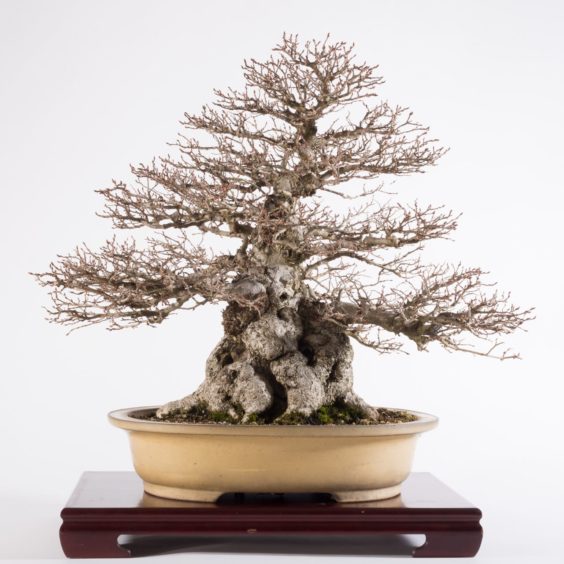
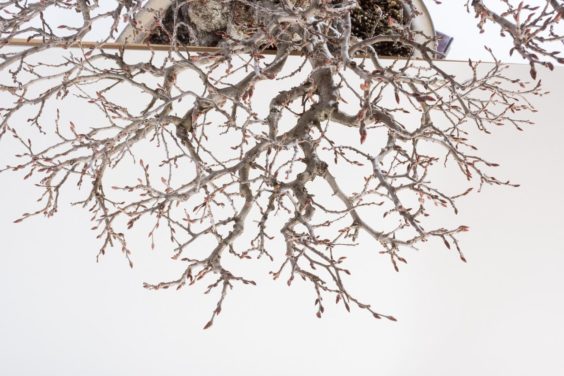
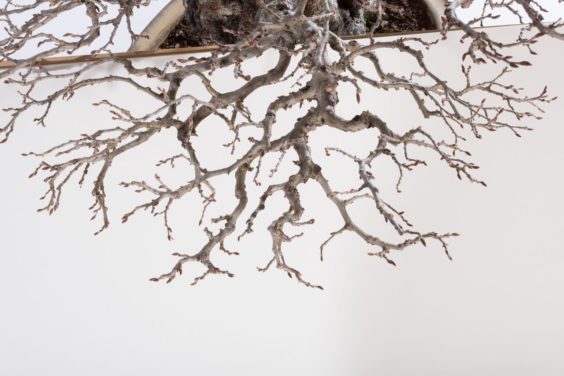
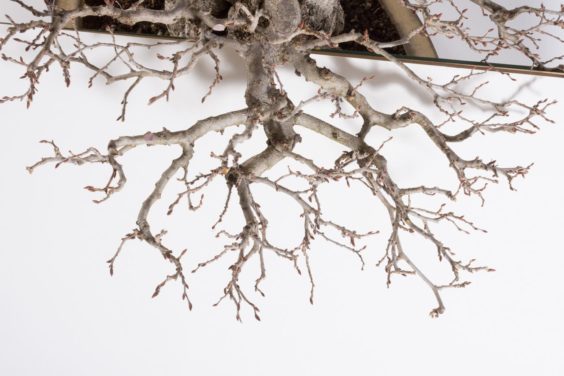
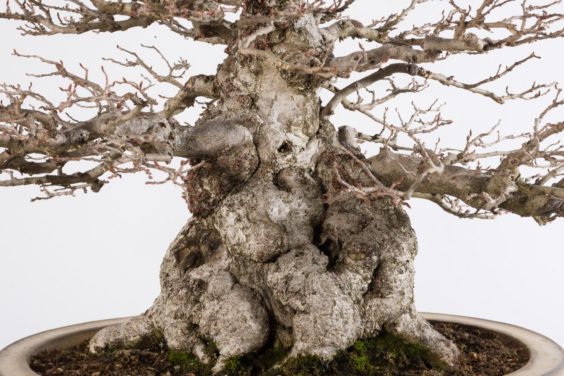
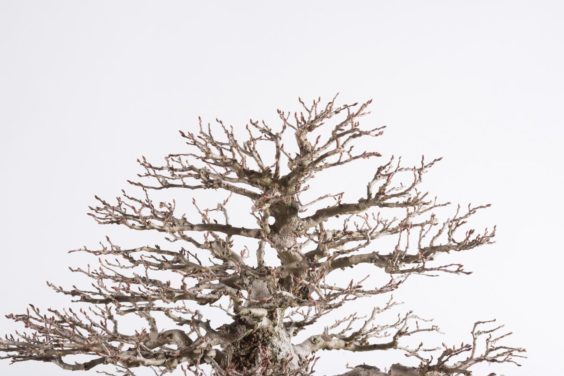
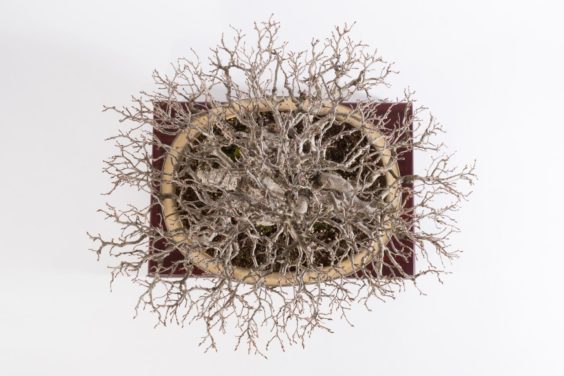
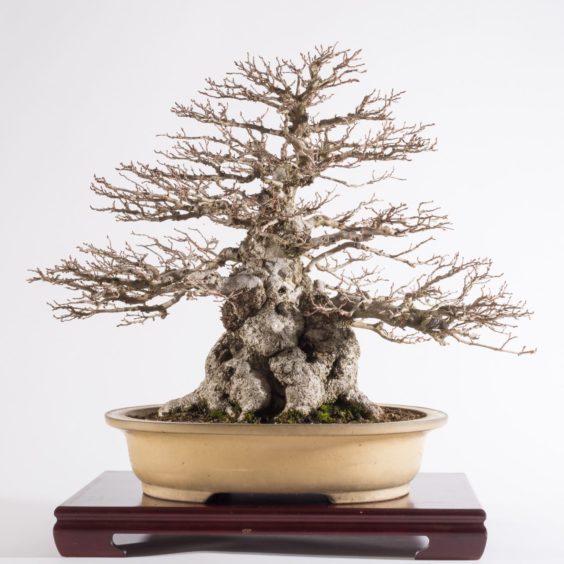
Andrew Robson says
Great post & beautiful tree!
Alessandro says
Much more clear!
I like it a lot!
Alessandro